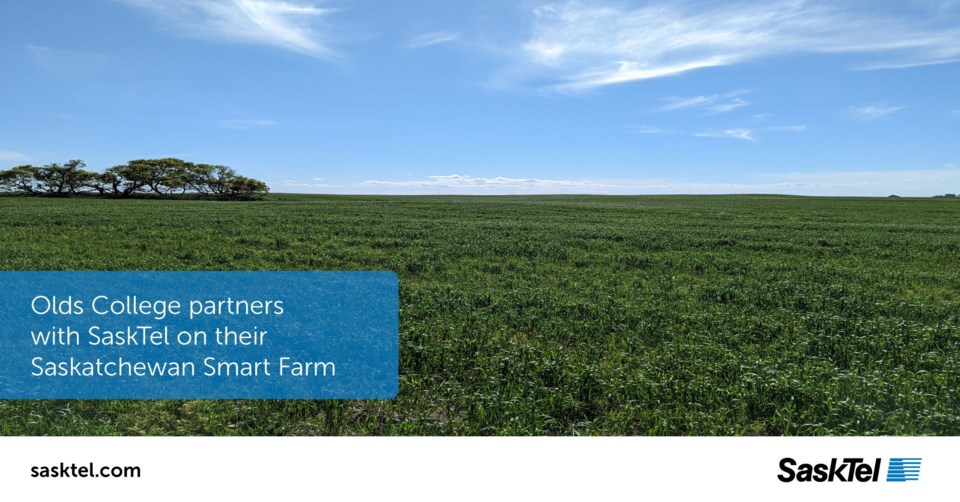SaskTel and Olds College of Agriculture & Technology have collaborated to solve some of the most challenging agriculture and rural connectivity issues within Saskatchewan. They signed the memorandum on Oct. 13.
“We have received federal government money and provincial government money to pay for the Ag tech to start these programs,” Mike Stefaniuk, Director of Business Development for IoT and Digital Transformation of SaskTel told us.
“We are going to jointly seek funding with Olds College, to get the necessary funding for setting up various devices and get the applications up and running.”
Stefaniuk said simply just throwing one kind of technology would not be enough for this system to operate properly. The whole infrastructure needs to be there. He calls it the DNA framework. He also said, within this DNA framework, they are not going to keep or retain any rights to own the data.
All the data will be owned by individual farmers and producers of agriculture.
The main focus is to supply all these Ag Tech infrastructures so that producers can make their own decisions and come up with ideas for improving their yield. In this way, the privacy of farmers’ data will be respected and Crown Corporations will have more accountability.
The goal of this Smart Farm is not only for supplying Ag Tech but also a learning hub for students and researchers.
“Students aren’t often exposed to Ag Tech; that’s not part of their programming,” said Stefaniuk. This is another challenge that the partnership wants to work on.
Stefaniuk believes exposing Ag Tech to students is important for real-life implications and it’s also something the students want as well. The company is still working with the University of Saskatchewan and Olds College of Agriculture & Technology to make these technologies accessible for students so that students are more familiar with and comfortable while operating them.
Another goal of this collaboration is to make technologies that are more environmentally friendly. Smart Farm will test on soils to see how much carbon footprint is already there, and how much carbon is being produced and absorbed regularly.
These results will help them make changes in their technology to control carbon management. Carbon emission has always been a bigger topic in Canada and it has also been taxed. A reduction in carbon emissions will be cost-effective for farmers.
“You don’t know if carbon emissions are increasing or decreasing or how much the farming operation is producing or absorbing, depending on what activity is taking place,” said Stefaniuk. “The first thing is to establish the baseline.”
The other goal is to solve “Labour Management.” Canada’s labour problems have always been a serious issue. Smart Farm’s goal is to use automation for reducing labour dependency.
“We know that there’s a real labour shortage for producers and on the farm,” he said. As they adapt more technological infrastructure, people need to get more comfortable and train themselves for these changes.
Even after all these interesting attributes were offered by Smart Farm and its Ag tech resources, the main question still relies on the acceptability among the farmers of Saskatchewan for proper implementations of such resources.
To this, Stefaniuk stated, “The framework we use has already been written years ago in a book called Crossing the Chasm.”
By this reference he meant, technological innovation is all about trial and error. Sometimes you lose some and sometimes you gain by a milestone. There are early innovators and adopters, then there are laggards and skeptics. The laggards and skeptics are reluctant to accept all these changes and adapt to the new ways.
“They will not take a leap of faith.” Although, when there is certain progress, they eventually come around to accepting these changes.
The main idea of this Smart Farm is to make the environment more eco-friendly and use Ag Tech to increase production yield for farmers’ profitability. It is also a learning hub for students who are interested in agriculture. The Smart Farm is built on 800 acres of land west of Craik, SK. It is also a gift from Margery Steckler and her late husband, George Steckler.
For more information, you can visit https://www.oldscollege.ca/olds-college-smart-farm/index.html.




